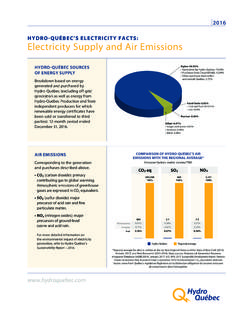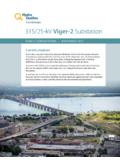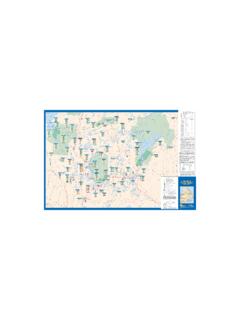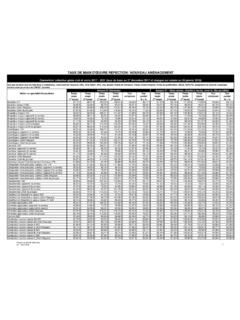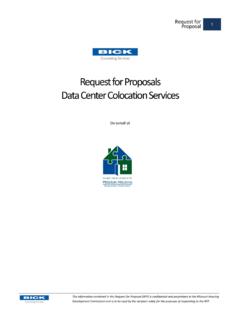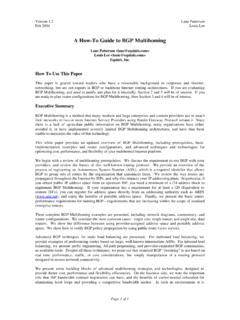Transcription of ECONOMIC ANALYSIS OF DATA CENTERS - Hydro …
1 1 Submitted to Direction D veloppement des affaires Qu bec Hydro -Qu bec ECONOMIC ANALYSIS OF data CENTERS 2 Table of Contents 1 BACKGROUND AND OBJECTIVES 3 Overview 3 ANALYSIS objectives 5 Procedure followed 6 2 ECONOMIC VALUE OF data HOSTING ACTIVITIES 7 Basic parameters 7 Main results 8 3 POTENTIAL CONTRIBUTION OF A GLOBAL VALUE CHAIN RELATED TO A data center ECOSYSTEM 16 Downstream data center activities 16 Upstream data center activities 18 4 CONCLUSION 20 KPMG LLP July 11, 2017 3 BACKGROUND AND OBJECTIVES Overview Hydro -Qu bec has identified the development of the data center sector as an avenue of growth that will contribute to meeting one of the main objectives of its Strategic Plan 2016 2020, which is to double its revenues within 15 years.
2 The opportunities for growth within this sector, along with the assets that make Qu bec a natural candidate for hosting such CENTERS , are among the reasons behind this decision. According to JLL data center Outlook 2016, worldwide data traffic is expected to increase tenfold in the next five years and the data center industry is expected to double in size. This impressive growth is due to several trends, including the adoption of cloud computing and consumers ever-increasing thirst for digital technology ( , online shopping, streaming, social media, the sharing economy, etc.). Growth is particularly strong within the colocation data center sector, which is growing by 10% to 15% every year. Privately owned, corporate data CENTERS (which constitute a more mature market), seem to be experiencing a decrease in growth, although more and more companies are offering this type of service.
3 However, companies in the data -intensive market continue to increase the number and size of their data storage facilities. Though the data center market is still fragmented, new key players, including Equinix and Digital Realty, are beginning to establish a presence and build larger CENTERS in many regions. In parallel, there is increasing competition between jurisdictions to attract these new mega CENTERS . For example (in the alone), over half of the 50 states have introduced tax incentives to attract data CENTERS . In addition to financial incentives, some regions, including Qu bec, benefit from major comparative advantages that enable them to attract this type of business. Qu bec s natural assets include the following: Source of low-cost electricity: a very important aspect, given the high energy costs associated with operating a data center (on average, these energy costs can represent more than 20% of the center s operating costs, since electricity is required to run computer systems and cool equipment.)
4 Energy supply with low GHG emissions: an increasingly significant siting criterion, given the social pressure exerted on data entre operators and customers. 4 Cold climate: a factor that contributes to lowering electricity bills and thus, reduces overall operating costs. Stricter data confidentiality laws in Canada: particularly in comparison to current legislation in the (namely, the USA PATRIOT Act, which allows American authorities to access data stored on soil a provision which does not exist in Canada s Privacy Act). Proximity to the market a factor that enables companies operating data CENTERS in Qu bec to efficiently service clients through faster, more efficient communication and data access.
5 Another of these natural advantages is the territory s depth in terms of information technology (IT) skills. Qu bec boasts a large pool of IT specialists, as well as a wide network of support facilities specializing in the field of information technology ( , higher education institutions, research institutes, cooperative organizations, etc.). According to a Cushman and Wakefield ANALYSIS , Canada is considered the 6th best data center location in the world, outranking the United States by four positions. This is mainly due to the criteria that apply to the energy resource. Canada also has a denser concentration of data CENTERS per capita than the Qu bec s data CENTERS are concentrated around the cities of Montr al and Qu bec.
6 Although installed capacity in the Greater Montr al area is still relatively small in comparison to other North American markets, Montr al stands out for its planned capacity additions. According to industry experts, the drivers for this anticipated growth will likely be new legislation governing data sovereignty and low costs associated with a renewable energy source. To capitalize on these trends, the Qu bec government, ECONOMIC development bodies and Hydro -Qu bec have increased their efforts to promote and attract investment from the data center sector. More specifically, over the past few years, Hydro -Qu bec has also developed a specific offer for these investors, which includes: Highly competitive rates such as the ECONOMIC Development Rate (EDR) and Demand Response (DR) Program A portfolio of prequalified sites, representing more than 25 million square feet at strategic locations Support to get projects up and running quickly 5 Expertise in energy efficiency to reduce energy consumption Moreover, the sector-related benefits and ECONOMIC spinoffs for Qu bec can vary from one type of data center to another, as evidenced by the ECONOMIC ANALYSIS conducted in 2010.
7 The purpose of that ANALYSIS was to address the following questions: Is it relevant to attract data CENTERS to Qu bec? If so, what types of data center ? With what kind of activity profile? Under what conditions? The objective was to conduct a rigorous, neutral evaluation of the ECONOMIC value generated by the different data center models. The evaluation also helped guide the targeting and screening process for financially supported project cases. How do things stand in 2017? This is a very good question, since ECONOMIC spinoffs can vary over time. In fact, data center operating technology and practices are continually evolving, and the resulting changes can have repercussions on the ECONOMIC impacts of the CENTERS activities.
8 ANALYSIS objectives This ANALYSIS thus falls within the overall context described above. Hydro -Qu bec s Direction D veloppement des affaires Qu bec wished to update a portion of the 2010 ANALYSIS , since the update results would make it possible to determine whether the current targeting and screening process should be used as is, or whether it should be adjusted. More specifically, the ANALYSIS focused on evaluating the gross ECONOMIC value generated by the different data center This made it possible to not only establish which types of data center generate sufficient value to justify supplying them with electricity, but also to identify some of the characteristics that contribute to increasing the ECONOMIC value of such an investment.
9 This made it possible to measure the direct and indirect impacts and potential ripple effect of data CENTERS in Qu bec. The following section (Section 2) describes the ECONOMIC spinoffs from activities that overlap with data center management and storage operations. Section 3 addresses the effects of other types of activities that do the same. These activities may relate to products and services from specialized suppliers, or to other peripheral services. The conclusion of this report summarizes all major observations stemming from the ECONOMIC ANALYSIS . 1 This involved updating portions of chapters 2 and 3 of the 2010 study 6 Procedure followed At the time of the 2010 ANALYSIS , there were few active data CENTERS in Qu bec.
10 ANALYSIS results were based on information from CENTERS outside Qu bec ( , in the United States, British Columbia and Ontario), and on cost This changed significantly in 2017. There are currently some 20 companies conducting data processing and hosting activities within buildings categorized as data The number of facilities operated by these businesses has increased steadily over the last five years to currently reach about 40. This does not include projects that had been approved but were not yet active when the ANALYSIS was conducted ( , projects that were in the planning stage and/or under construction at the beginning of 2017). More importantly, most of the active CENTERS had not yet reached full deployment. Although operational data CENTERS represented a power demand of approximately 40 MW at the end of 2016, their long-term needs were estimated at about 350 MW.


